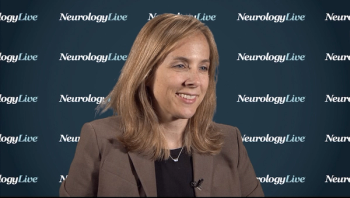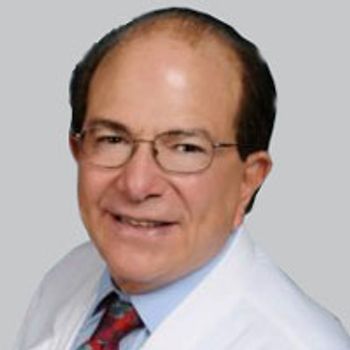
The director of the Cleveland Lou Ruvo Center for Brain Health at Cleveland Clinic laid out these challenges that he and his colleagues face in differentiating patients with Lewy body dementia from other dementia pathologies.

The director of the Cleveland Lou Ruvo Center for Brain Health at Cleveland Clinic laid out these challenges that he and his colleagues face in differentiating patients with Lewy body dementia from other dementia pathologies.

The agency sent a joint letter with the FTC to Rooted Apothecary LLC for claiming its CBD products can medically treat a number of conditions including Alzheimer disease and Parkinson disease. Since 2017, the FDA has issued more than 10 such letters.

SynapCell and Motac Neuroscience recently announced a novel biomarker, BetaPark [evo], for Parkinson disease progression. The chief innovation officer at SynapCell provided insight into the clinical implications of this discovery.

The director of the Parkinson’s Disease and Movement Disorders Center of Boca Raton and principal investigator of the PROSPECT study, offered insight into the clinical impact and advantages of the Cala Trio neuromodulation device.

The wrist-worn wearable neuromodulation device for essential tremor was shown to be safe and efficacious in the PROSPECT trial, with more than 50% of patients experiencing a ≥50% improvement in tremor "power" or severity.

The VMAT2 inhibitor marketed as Austedo by Teva Pharmaceuticals was associated with clinically meaningful long-term treatment benefit in patients with tardive dyskinesia, showing higher response rates than those observed in short-term trials.

Neurology News Network for the week ending October 19, 2019.

A first-of-its-kind study has explored the social and professional impacts that tardive dyskinesia-related movements can have on individuals with the condition, as well outward perceptions.

Results of a phase 2 trial in patients with Friedreich’s ataxia leaves hope for the future, with regulatory submission on the agenda.

The oral selective adenosine A 2A receptor antagonist was approved in August as adjunctive treatment to levodopa/carbidopa for patients with Parkinson disease who experience off episodes.

Cerevel Therapeutics’ highly selective dopamine D1/D5 agonist showed significant reductions in UPDRS-III scores for those with early-stage Parkinson disease and is planned to enter phase 3 in 2020.

The professor of chemistry and chemical biology at Harvard University and Blavatnik National Laureate discussed the work she and colleagues have done on microbiome metabolism and what upcoming plans to pursue this further could achieve.

The drug, the only approved botulinum toxin type B on the market, was recently approved for the treatment of chronic sialorrhea in adults.

The study included patients with Parkinson disease receiving treatment with levodopa carbidopa who experienced morning akinesia.

Neurology News Network for the week ending September 28, 2019.

The senior research scientist in the Center for Mobility and Rehabilitation Engineering Research at Kessler Foundation shared insight into the work she and her colleagues are doing to try to revolutionize the way exoskeletons can improve neurorehabilitation and gait challenges.

The clinical development of ND0612 includes 2 doses; a low dose for mid-stage Parkinson patients experiencing loss of motor control on oral therapy, and a high dose for severe disease in which oral drugs are no longer effective.

Acorda Therapeutics’ Inbrija, an inhalation powder formulation of levodopa, was associated with no significant increases in troublesome dyskinesia for patients being treated with carbidopa/levodopa.

Data of amantadine (Gocovri, Adamas) extended-release tablets suggested that the therapy is, in fact, safe and tolerable with a unique pharmacokinetic profile, and results in significant improvements in dyskinesia for patients with Parkinson disease.

Acadia Pharmaceuticals’ pimavanserin significantly improved Hamilton Depression Rating Scale scores for patients with Parkinson disease with depressive symptoms in an 8-week, open-label study.

Cerevel Therapeutics’ highly selective dopamine D1/D5 agonist showed significant reductions in UPDRS-III scores for those with early-stage Parkinson disease and is planned to enter phase 3 in 2020.

Analysis suggests that high-intensity aerobic exercise intervention, when gamified and delivered in an at-home fashion, can attenuate the symptoms of Parkinson disease while maintaining good adherence.

The 1st Annual Congress on the Future of Neurology will take place September 27-28, 2019 at the InterContinental New York Times Square in New York City.

The drug is currently approved for the treatment of Parkinson disease-related psychosis, and is also being explored in schizophrenia and major depressive disorder.

The study, expected to complete in early 2021, will measure change from baseline in daily on time without troublesome dyskinesia. The study design will be presented at the International Congress of Parkinson's Disease and Movement Disorders.